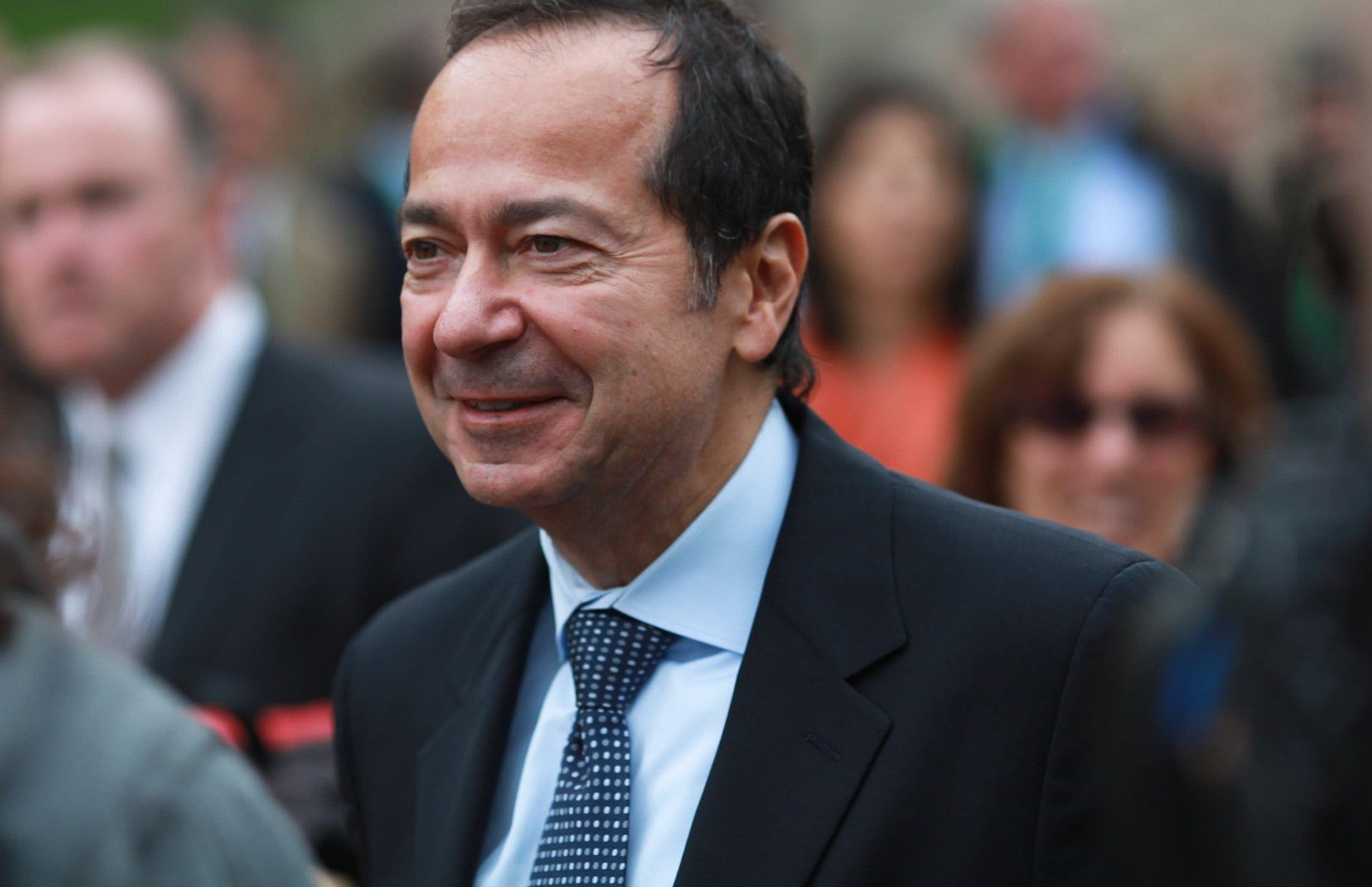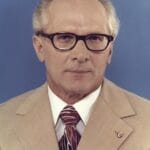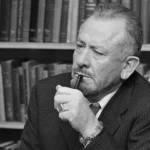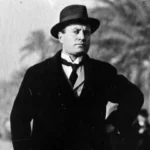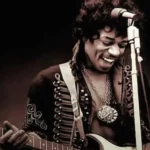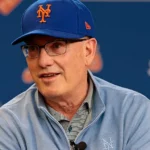Meet John Paulson, the financial wizard who became a billionaire by thinking outside the box. He’s got some wild stories and insights that will likely change the way you think about investing. Buckle up for a journey filled with unexpected turns and aha moments, as we dive into the life of this market-moving mogul.
Surprising Facts about John Paulson
John Paulson. You know the name, right? The guy who made a fortune betting against the 2008 housing market crash. But there’s more to him than his audacious financial maneuvers. Sure, he’s a Wall Street titan, but did you know about his early struggles, his passion for art, or even his surprising dedication to giving back? Let’s peel back the layers and uncover some interesting tidbits about the man behind the money.
A Rocky Start: Not an Overnight Success
The story goes that Paulson made billions with one brilliant move. But his journey to the top wasn’t a straight line. Before the big win, Paulson & Co. wasn’t exactly printing money. In fact, they took some pretty significant hits early on. This just goes to show that even the savviest investors face setbacks. What sets them apart is their ability to learn, adapt, and come back stronger.
Beyond the Balance Sheet: The Art of the Deal (and Art, Period)
Here’s something you might not expect from a finance whiz: Paulson is a serious art collector. We’re not talking about a couple of prints to spruce up the office. We’re talking about a collection brimming with masterpieces by some of the art world’s biggest names. This suggests a man of diverse tastes and an eye for value beyond the stock ticker. It’s a subtle reminder that even the most numbers-oriented among us can appreciate beauty and creativity.
Putting His Money Where His Heart Is: A Philanthropic Side
It’s easy to assume that someone in Paulson’s position might solely focus on growing their own wealth. But that’s not the whole story. Paulson is actually known for his philanthropy. He’s a dedicated supporter of organizations focused on improving education and healthcare, showing that he’s not just about making money, but also about making a difference.
Inspiring a New Generation: More Than Just Money
Paulson’s impact extends beyond his own impressive bottom line. He’s become a mentor figure in the financial world, inspiring a new generation of investors with his bold strategies and analytical prowess. His willingness to challenge conventional wisdom and take calculated risks has undoubtedly shaped the way many approach investing today.
A Legacy of Debate: The Ethics of Success
While Paulson’s financial achievements are undeniable, they haven’t been without controversy. Some critics argue that his aggressive strategies, particularly his bet against the housing market, may have contributed to market instability and potentially harmed individuals caught in the downturn. It’s a complex issue with no easy answers, highlighting the ethical considerations that sometimes accompany financial success.
John Paulson: More Than a Single Headline
John Paulson’s story isn’t just about numbers and market predictions. It’s a reminder that even in the high-stakes world of finance, individuals are multifaceted. He’s a testament to resilience, a patron of the arts, and a philanthropist, proving that there’s more to this financial giant than what meets the eye. His legacy, both celebrated and debated, continues to shape the financial landscape and spark conversation about the role and responsibility of investors in a complex world.
What did John Paulson Study?
So, you’re curious about John Paulson’s educational background? It’s no surprise, given his legendary status in the finance world. Let’s just say the guy clearly hit the books on his way to becoming a Wall Street titan.
Paulson started his journey at New York University. He dove headfirst into the world of finance, soaking up everything there was to know about the markets. And his hard work paid off big time – he graduated with a bachelor’s degree in finance, earning the highest honors possible: summa cum laude. That’s not just acing your classes, that’s like acing them while teaching the professor a thing or two!
But Paulson wasn’t done yet. He set his sights on the Ivy League and landed himself a spot at Harvard Business School. Now, we’re talking about one of the most prestigious business schools on the planet! And guess what? He crushed it there too. He graduated with high distinction, snagging the coveted title of George F. Baker Scholar. That’s like graduating at the top of your class alongside a bunch of future CEOs and industry leaders.
Now, here’s the thing: Paulson’s academic journey wasn’t just about collecting fancy degrees. It was about building a rock-solid foundation for his career. Those years spent studying finance weren’t just about memorizing formulas and theories. They were about developing a deep understanding of how the markets work, how to analyze trends, and how to spot opportunities that others might miss.
And boy, did that education pay off! His understanding of finance, honed through years of dedicated study, set the stage for his incredible success in the world of investing. We’re talking about the kind of success that makes headlines and inspires countless aspiring investors. But that’s a story for another time…
Where did John Paulson Go to School?
So, you want to follow in the footsteps of a Wall Street titan, huh? Well, John Paulson’s journey to becoming a hedge fund legend started with a solid education. Let’s take a look at where he picked up all that financial savvy.
First Stop: New York University
Back in 1978, a young John Paulson walked across the stage at New York University, clutching a Bachelor of Science in Finance. He had earned his stripes at NYU’s College of Business and Public Administration, probably soaking up all the financial knowledge he could get his hands on.
Think about it – New York City, the financial heart of the world, was practically his campus! You can bet he was already getting a feel for the energy and excitement of the markets.
Next Up: Harvard Business School
Of course, Paulson wasn’t content to stop there. He set his sights on the big leagues – Harvard Business School. And in 1980, he graduated with a shiny new Master of Business Administration (MBA).
Now, Harvard Business School is no joke. It’s like the training ground for future CEOs and financial masterminds. It’s safe to say Paulson honed his skills there, learning from the best and brightest minds in the business world.
So, what’s the takeaway here?
Paulson’s story suggests that a top-notch education played a crucial role in his success. His time at NYU and Harvard probably gave him the tools and connections to navigate the complex world of finance.
But it’s not just about the name on the diploma.
While prestigious schools can open doors, it’s ultimately what you do with that education that matters. Paulson’s story shows the importance of hard work, ambition, and a deep understanding of financial markets.
Who is the Billionaire John Paulson?
John Paulson is a hedge fund manager, known for his bold investment strategies and his remarkable success in navigating the complexities of the financial markets. He runs his own company, Paulson & Co., a firm that has become synonymous with event-driven investing.
What catapulted Paulson into the limelight was his gutsy move back in 2007. Imagine predicting the housing market crash before it happened – that’s exactly what he did. He bet against subprime mortgages, which were essentially risky loans given to people who couldn’t really afford them. When the housing bubble burst, Paulson became a Wall Street legend, raking in a cool $4 billion.
But Paulson’s success isn’t just about one lucky bet. This guy consistently makes astute investment decisions, earning him a reputation as one of the best in the game. He’s like the Michael Jordan of hedge funds – always at the top of his game.
One thing that sets Paulson apart is his focus on two main strategies: merger arbitrage and proxy event investments. In essence, he’s a master at spotting companies about to merge or undergo major changes. He then makes strategic bets based on how those changes might affect the company’s value. It’s like chess on a grand scale, and Paulson is a grandmaster.
Of course, you don’t reach billionaire status without a little help along the way. Paulson’s sharp mind was honed at some of the best schools in the world. He graduated top of his class with a finance degree from New York University and then snagged an MBA with honors from Harvard Business School.
Now, while Paulson is all about making money, he’s not just hoarding it all for himself. He’s actually quite generous when it comes to giving back. He’s donated huge sums to education and healthcare. In fact, he gave a whopping $400 million to his alma mater, Harvard, which was so impressed they renamed their School of Engineering and Applied Sciences after him.
John Paulson’s story is a classic tale of smarts, guts, and a little bit of luck. He saw an opportunity that others missed and had the courage to bet big. His journey from Wall Street hopeful to billionaire investor is proof that with the right mix of knowledge, instinct, and daring, anything is possible.
How Much is John Paulson Worth?
As of January 2023, Forbes estimates John Paulson’s net worth to be around $3 billion. Now, that’s still an incredible amount of wealth, but it’s important to remember that his net worth has fluctuated over the years, much like the ebb and flow of the financial markets.
Back in 2007, Paulson was at the pinnacle of his game. His investment decisions, specifically betting against the struggling subprime mortgage market, paid off spectacularly, and his net worth skyrocketed to an astounding $16 billion! It was a monumental win that cemented his legacy as a legendary hedge fund manager.
Paulson’s investment strategies have always centered around “event-driven plays.” He has a knack for analyzing specific events – like a company merger or a change in government policy – and anticipating how those events will impact the stock market. He then makes calculated bets based on his predictions. While his big win in 2007 was extraordinary, it’s important to note that the financial world can be unpredictable. Even the most seasoned investors experience fluctuations in their net worth.
Outside of finance, Paulson is known for his strong support of former President Donald Trump and has donated significantly to his presidential campaigns.
How Much Gold Does Paulson Own?
John Paulson is known for his belief in gold as a safe haven asset, a hedge against economic storms. However, rather than hoarding physical gold bars, Paulson’s approach is more nuanced. He primarily invests in gold mining companies, essentially owning a piece of the source of the precious metal.
It’s estimated that if you converted all of Paulson & Company’s gold-related investments into actual gold, it would amount to a staggering 96 metric tons! That’s a whole lot of gold!
Paulson sees gold as a safety net for his investments. While the stock market can be volatile, gold tends to hold its value, even during turbulent times.
While Paulson has sold off some of his gold ETF shares in the past, he remains optimistic about gold’s long-term prospects. He appears to believe that gold will continue to be a valuable asset, especially as a way to diversify his portfolio and navigate potential risks.
Of course, even though gold is often perceived as a safe haven, its value can fluctuate. This means that Paulson & Company’s overall worth can go up or down depending on the performance of the gold market.
What Companies Does John Paulson Own?
Let’s delve into the specifics of John Paulson’s current investment holdings. Instead of spreading his wealth thinly, Paulson makes calculated investments in companies he believes in.
Currently, he has a diverse portfolio, with significant stakes in a select group of companies:
- Madrigal Pharmaceuticals: This biotech company focuses on developing therapies for challenging diseases like fatty liver disease and NASH (nonalcoholic steatohepatitis). Paulson likely sees potential in this area, especially with the increasing prevalence of these conditions.
- Bausch Health Companies: This is a company that has faced its share of difficulties, but Paulson might be betting on a turnaround. Bausch operates in the pharmaceutical and medical device sectors, covering a broad range of healthcare solutions.
- BrightSphere Investment Group: This investment might seem a bit meta, as BrightSphere itself is an asset management firm. Paulson probably sees value in their expertise in managing investments for individuals and institutions.
- Perpetua Resources Corp: This investment aligns with Paulson’s affinity for gold. Perpetua is all about the responsible development of gold resources.
- NovaGold Resources Inc.: Continuing the theme of gold, NovaGold is another key player in the gold mining industry. They’re focused on developing a massive gold deposit in Alaska. It’s a long-term play, but that seems to align with Paulson’s investment style.
In addition to these major holdings, there are whispers that Paulson also has investments in Horizon Therapeutics, a company specializing in treatments for rare diseases, and, unsurprisingly, additional investments in gold through NovaGold Resources.
It’s essential to remember that investing is inherently risky. What works for a financial giant like Paulson might not be suitable for everyone.
Who Made the Most Money from the 2008 Crash?
The 2008 financial crisis was a time of economic turmoil, but amidst the chaos, some individuals managed to profit from the downturn. John Paulson became a Wall Street legend for his incredibly well-timed bet against the housing market.
Paulson, through his firm Paulson & Co., recognized the warning signs of the impending housing bubble burst back in 2007 when many were still optimistic about the market. They understood that the prevalence of subprime mortgages – risky loans granted to individuals with poor credit – would ultimately lead to a collapse.
Their bold move? They invested heavily in credit default swaps, which acted as insurance against these risky mortgages. If the mortgages failed, as they anticipated, they stood to make a substantial profit.
And their prediction came true. When the housing bubble burst, Paulson’s firm made an astonishing $20 billion! That’s not merely luck; it’s a testament to their deep understanding of the financial system and their ability to identify opportunities that others missed.
However, Paulson wasn’t alone in profiting from the crash. Legendary investor Warren Buffett recognized the unique buying opportunity presented by the crisis. He invested in companies like Goldman Sachs and General Electric when their stock prices plummeted, capitalizing on their long-term value.
It’s a fascinating paradox – during one of the most significant financial crises in recent history, some individuals managed to amass even greater wealth. This underscores the complexity of the financial markets, where opportunities can arise even in the most challenging of times.
Is John Paulson Related to Henry Paulson?
The shared last name might lead you to wonder if John Paulson and Henry Paulson are related. While they both hold prominent positions in the financial world, they are not related.
- John Paulson: The hedge fund manager who made billions betting against the subprime mortgage market.
- Henry Paulson: The U.S. Treasury Secretary under President George W. Bush, who played a critical role in navigating the 2008 financial crisis.
Publicly available information doesn’t reveal any family connection between the two. Their shared last name and involvement in finance appear to be purely coincidental.
Is Michael Burry a Doctor?
Michael Burry is best known for his uncanny prediction of the 2008 housing market crash, a story immortalized in the film “The Big Short.” But what many people might not know is that he’s also a medical doctor.
Before delving into the world of finance, Burry earned his M.D. from Vanderbilt University. However, his passion for investing led him to leave his medical residency at Stanford Hospital and pursue a career in finance.
Interestingly, while he’s no longer practicing medicine, Burry still maintains his medical license with the Medical Board of California.
Burry has drawn parallels between medicine and investing. He views investing as a form of diagnosis. Just like a doctor examines a patient to understand their health, Burry meticulously analyzes companies before making an investment. He scrutinizes their financial statements, management teams, and overall market position to assess their financial health.
This unique background likely contributes to his preference for value investing, a strategy focused on finding undervalued companies with strong fundamentals. It’s an approach that demands patience, meticulous research, and a willingness to go against the grain – qualities that Burry clearly possesses.
What did Henry Paulson do in 2008?
The year 2008 saw the world teetering on the precipice of a full-blown financial meltdown. Henry Paulson, serving as the U.S. Treasury Secretary, found himself at the helm, tasked with steering the country away from economic disaster.
Paulson orchestrated a massive government intervention, injecting billions of dollars into the struggling financial sector. This bailout package, while controversial, was designed to prevent a complete collapse of the global economy.
The move was met with mixed reactions. Critics argued that bailing out the institutions that had played a role in creating the crisis rewarded reckless behavior. However, Paulson argued that the potential consequences of inaction – a devastating global depression – were far too great to ignore. He believed that stabilizing Wall Street was crucial for protecting Main Street and preventing widespread job losses and economic hardship.
Surprisingly, the government actually turned a profit from the bailout. They recouped the funds invested in the banks, generating a surplus. While the full impact of Paulson’s actions in 2008 is still debated, it’s clear that his intervention played a significant role in averting a catastrophic economic collapse.
Interested in learning more about other fascinating figures?
- Discover intriguing facts about Victoriano Huerta, the Mexican general and politician: Captivating Facts about Victoriano Huerta.
- Uncover obscure facts about professional wrestler Tommy Dreamer: Facts about Tommy Dreamer.
- Unlocking Francis Alexander Shields’ Finance Empire: A Comprehensive Biography - July 12, 2025
- Unveiling Francis Alexander Shields: A Business Legacy - July 12, 2025
- Francis Alexander Shields’ Business Career: A Comprehensive Overview - July 12, 2025
